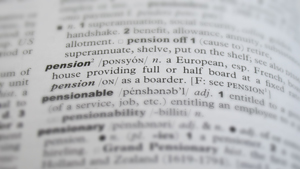 2014 was a momentous year for pensions. Changes around how pensions could be drawn at retirement and how death taxes on pensions would be improved were both announced in the year, with the intention that all these new rules will be in place by the end of April 2015.
2014 was a momentous year for pensions. Changes around how pensions could be drawn at retirement and how death taxes on pensions would be improved were both announced in the year, with the intention that all these new rules will be in place by the end of April 2015.
For a pension saver, the landscape has changed and will continue to do so, resulting in many financial planning implications.
One of the key aspects is likely to be the advent of a new range of products to accommodate the new freedom around how you can draw your pension when you retire. Annuities, traditionally the ‘go to’ option for most pension savers, now look like they have had their day. However their most appealing feature, a secure lifetime income, is something many retirees will still be looking for. Pension providers and other investment companies will therefore be innovating to bring a new style of secure income product into the market. Watch this space, as they say!
These greater freedoms may well at some point come at a price and the general election in May 2015 will be an interesting moment; a change of government may bring in a different view of the exceptional tax reliefs that pension savers currently enjoy. An early budget from the next government could see a reduction in the income tax relief available, something that has been muted on and off for some time.
There is a complicated relationship in place between government and pensions which is muddied by the government’s own long term pension liabilities as the UK’s biggest employer. Government is responsible both for state pensions and for the public sector, final salary Public Service scheme. Both impose heavy burden on government, short and long term. Whether it is politically popular or not, the shift towards private sector provision is a growing one. An announcement which may start to means test pensions within the state structure could be a major surprise.
It is likely that if any government is going to do anything radical which is also unpopular it will be in the first few months after the next election. It may well be worth maximising any personal moves around pension planning ahead of the first budget of the next government.
April 2015 is also the month when members of Public Services pension schemes see the new career average earnings method applied to their earnings calculation; this is a change introduced by the Public Service Pensions Act 2013 and is part of a wider set of changes which reflect the growing cost burden.
Higher member contributions are already a feature; further announcements around much higher future contributions and extensions to retirement dates would be no surprise given the exceptional steps that need to be taken to reduce future government liabilities.

